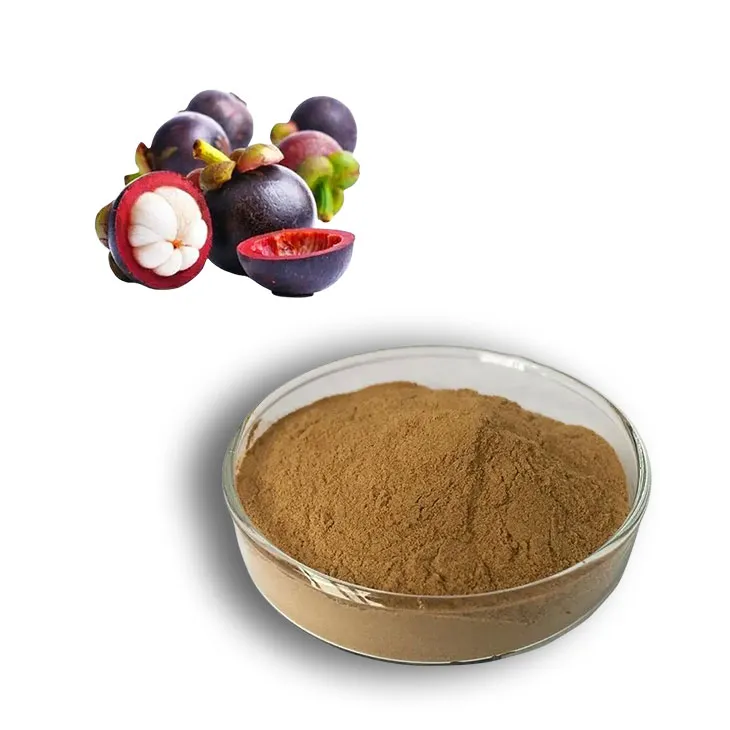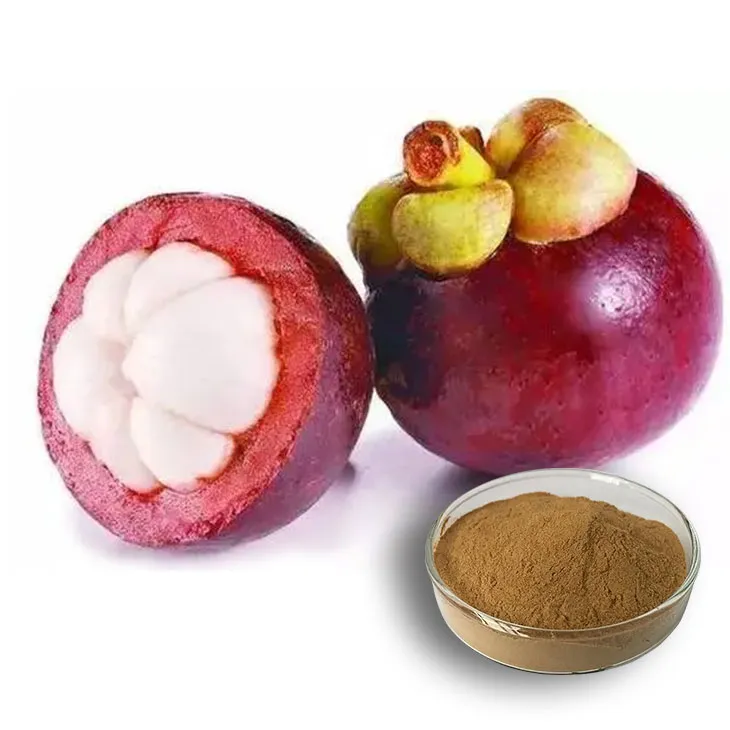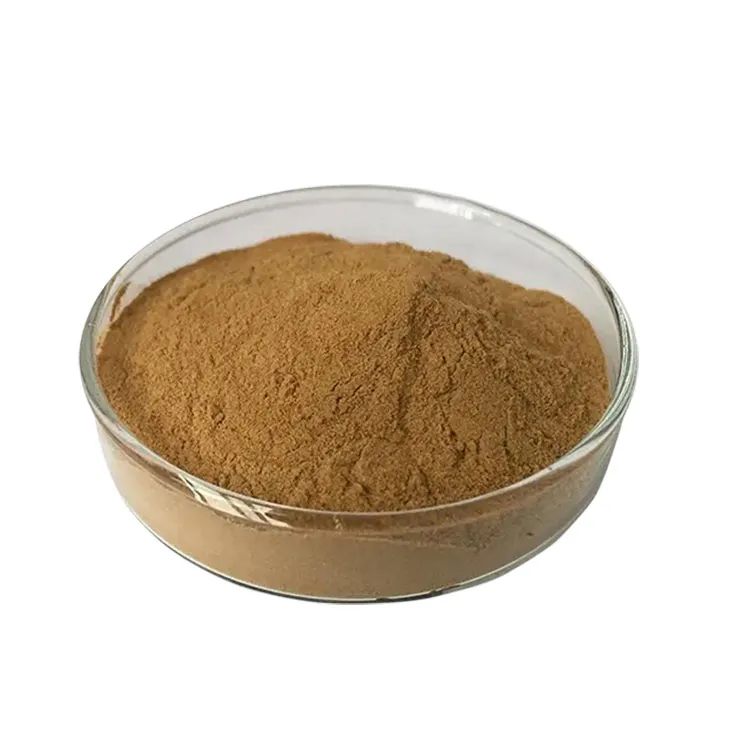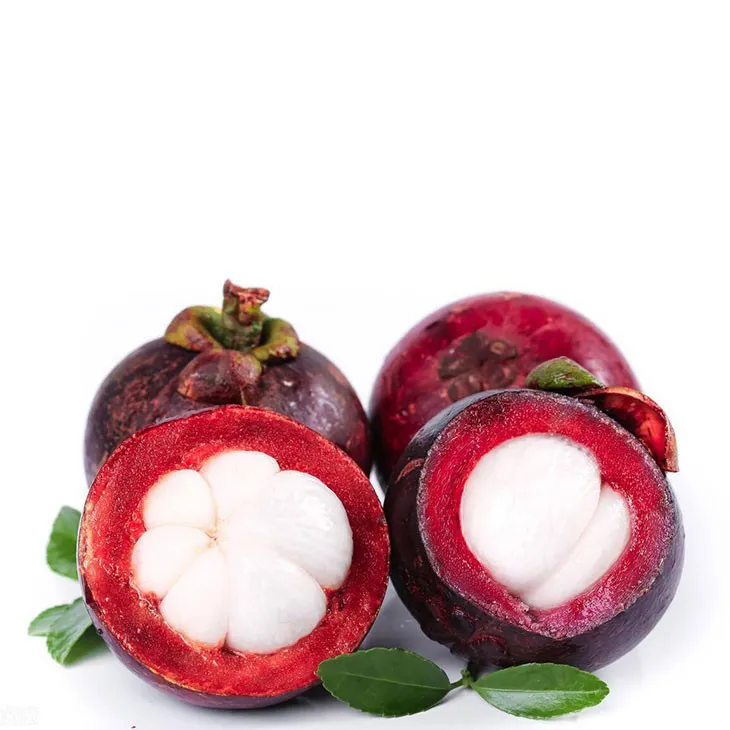- 0086-571-85302990
- sales@greenskybio.com
The extraction process of mangosteen extract powder.
2024-11-29

1. Introduction
The extraction of Mangosteen extract powder is a complex yet fascinating process. Mangosteen, a tropical fruit known for its rich nutritional and medicinal properties, has been the focus of research in various fields such as nutraceuticals and cosmeceuticals. The extract powder obtained from this fruit is a concentrated form of its beneficial compounds, which can offer a wide range of health benefits and cosmetic applications.

2. Procurement of Fresh Mangosteens
The first step in the extraction process is the procurement of fresh mangosteens. Mangosteens are typically sourced from tropical regions where they are grown abundantly. It is crucial to ensure that the fruits are of high quality. This involves considering factors such as the ripeness of the fruits, as well as their overall condition.
During the procurement process, growers and suppliers need to follow strict quality control measures. For example, they must ensure that the fruits are free from diseases, pests, and any signs of physical damage. Only the best - quality mangosteens are selected for the extraction process, as this will directly impact the quality of the final extract powder.

3. Sorting of Mangosteens
Once the mangosteens are procured, the next step is sorting. This is an important part of the process as it helps to pick out the best fruits for extraction. Sorting can be done manually or using mechanical sorting devices.
- Manual sorting involves visually inspecting each fruit and separating those that meet the desired criteria. Workers look for signs of ripeness, size, and overall quality. For example, fruits that are too small or over - ripe may be separated from those that are just right for extraction.
- Mechanical sorting devices use various techniques such as size - based separation or density - based separation. These devices can quickly and efficiently sort large quantities of mangosteens, ensuring a more consistent quality of the sorted fruits.

4. Targeting the Phytochemical - Rich Parts
The extraction mainly focuses on the phytochemical - rich parts of the mangosteen. The fruit contains a variety of phytochemicals such as xanthones, which are known for their antioxidant and anti - inflammatory properties. These phytochemicals are concentrated in different parts of the fruit, including the pericarp (the outer layer of the fruit).
To ensure maximum extraction of these beneficial compounds, it is important to identify and target the parts of the mangosteen that are richest in phytochemicals. This may require careful study and analysis of the fruit's composition. For example, research has shown that the pericarp of the mangosteen contains a relatively high concentration of xanthones compared to other parts of the fruit.

5. Grinding of Mangosteen Material
After the sorting process, the mangosteen material is ground into a fine pulp or powder. This is a crucial step as it increases the surface area for extraction. A larger surface area allows for more efficient contact between the mangosteen material and the extraction solvent.
The grinding can be done using various types of grinders, such as a blender or a specialized industrial grinder. The choice of grinder depends on the scale of the extraction operation. For small - scale laboratory extractions, a blender may be sufficient, while for large - scale commercial extractions, an industrial grinder may be required.
During the grinding process, it is important to ensure that the mangosteen material is ground to a consistent fineness. If the particles are too large, the extraction may not be complete, while if the particles are too fine, it may cause problems during the filtration step later in the process.
6. Addition of Extraction Solvent
Once the mangosteen material is ground, a suitable extraction solvent is added. Common extraction solvents used for mangosteen extraction include methanol or a mixture of solvents. The choice of solvent depends on several factors, such as the solubility of the target compounds and the safety and cost - effectiveness of the solvent.
Methanol is often used because it has a good ability to dissolve many of the phytochemicals present in mangosteen. However, it is also a toxic solvent, so proper safety precautions must be taken when using it. In some cases, a mixture of solvents may be preferred to achieve a more selective extraction or to reduce the toxicity of the solvent system.
The amount of solvent added also needs to be carefully controlled. Too little solvent may result in incomplete extraction, while too much solvent may lead to a dilute extract and may also increase the cost of the extraction process.
7. Agitation of the Mixture
After adding the extraction solvent, the mixture is agitated continuously. This is done to enhance the mass transfer of the active compounds from the solid (mangosteen material) to the liquid (extraction solvent) phase. Agitation can be achieved using various methods, such as mechanical stirring or shaking.
Mechanical stirring is often used in large - scale extraction operations. It involves the use of a stirrer, which rotates at a certain speed to keep the mixture well - mixed. Shaking can be used for both small - scale and large - scale extractions. In a laboratory setting, a shaker table can be used to shake the sample containers at a controlled frequency and amplitude.
The duration of agitation also plays an important role. Longer agitation times generally result in more complete extraction, but there is a point of diminishing returns. After a certain period of time, further agitation may not significantly increase the extraction efficiency, and may instead start to cause degradation of the active compounds.
8. Filtration of the Resulting Mixture
Following the extraction and agitation, the resulting mixture is filtered through a fine filter to obtain a clear extract. Filtration is necessary to separate the liquid extract from the solid residue of the mangosteen material.
There are different types of filters that can be used for this purpose. For example, filter paper can be used for small - scale laboratory filtrations. In larger - scale commercial operations, more durable and efficient filters such as membrane filters or filter cartridges may be employed.
The pore size of the filter is an important consideration. A fine - pore filter is required to ensure that all the solid particles are removed from the extract. However, if the pore size is too small, it may slow down the filtration process significantly.
9. Chromatographic Techniques for Purification
The extract obtained after filtration may still contain impurities or unwanted compounds. To further purify the extract, chromatographic techniques may be employed. Chromatography is a powerful separation technique that can separate different compounds based on their physical and chemical properties.
There are several types of chromatography that can be used for mangosteen extract purification, such as high - performance liquid chromatography (HPLC) and column chromatography.
- High - Performance Liquid Chromatography (HPLC): HPLC is a highly sensitive and efficient chromatographic technique. It uses a high - pressure pump to force the sample through a column filled with a stationary phase. Different compounds in the extract interact differently with the stationary phase, resulting in their separation. HPLC can provide a high - resolution separation of the compounds in the mangosteen extract, allowing for the isolation of the purest form of the desired phytochemicals.
- Column Chromatography: Column chromatography is a more traditional chromatographic method. It involves packing a column with a stationary phase material, such as silica gel or alumina, and then passing the extract through the column. As the extract moves through the column, the different compounds are separated based on their affinity for the stationary phase. Column chromatography is relatively simple and cost - effective, but it may not provide the same level of resolution as HPLC.
10. Drying of the Purified Liquid Extract
Once the extract has been purified using chromatographic techniques, the liquid extract is dried to produce the Mangosteen extract powder. Drying is an important final step as it converts the liquid extract into a stable, powder form that is easier to store, transport, and use in various applications.
There are different methods for drying the liquid extract, such as vacuum drying. Vacuum drying is a preferred method as it can remove moisture from the extract at a lower temperature compared to other drying methods. This helps to preserve the integrity of the active compounds in the extract, as some phytochemicals may be sensitive to high temperatures.
During vacuum drying, the liquid extract is placed in a vacuum chamber. The reduced pressure in the chamber causes the water in the extract to evaporate at a lower temperature. Once the drying process is complete, the resulting Mangosteen extract powder is a concentrated source of the fruit's beneficial compounds.
11. Applications of Mangosteen Extract Powder
The mangosteen extract powder has great potential in different fields, including nutraceuticals and cosmeceuticals.
- Nutraceuticals: In the field of nutraceuticals, mangosteen extract powder can be used as a dietary supplement. It can provide a concentrated source of antioxidants, anti - inflammatory compounds, and other beneficial phytochemicals. These compounds may help to boost the immune system, improve cardiovascular health, and protect against chronic diseases.
- Cosmeceuticals: In cosmeceuticals, mangosteen extract powder can be incorporated into various skincare and haircare products. The antioxidant and anti - inflammatory properties of the extract can help to protect the skin from damage caused by free radicals, reduce inflammation, and improve the overall appearance of the skin. It may also be used in haircare products to promote healthy hair growth and prevent hair loss.
FAQ:
What is the first step in the extraction process of mangosteen extract powder?
The first step is the procurement of fresh mangosteens, followed by sorting to select the best fruits.
Why is the mangosteen ground into a fine pulp or powder before extraction?
Grinding the mangosteen into a fine pulp or powder increases the surface area for extraction, which helps in better extraction of the active compounds.
What are the common extraction solvents used in the extraction of mangosteen extract powder?
Common extraction solvents include methanol or a mixture of solvents.
How is the extract purified after the initial extraction?
After the initial extraction, the extract may be subjected to chromatographic techniques for further purification.
What method is used to dry the liquid extract to obtain mangosteen extract powder?
Methods like vacuum drying are used to dry the liquid extract to produce the mangosteen extract powder.
Related literature
- Mangosteen Extract: Properties, Benefits and Applications"
- "The Phytochemical Composition of Mangosteen and Its Extraction Techniques"
- ▶ Hesperidin
- ▶ citrus bioflavonoids
- ▶ plant extract
- ▶ lycopene
- ▶ Diosmin
- ▶ Grape seed extract
- ▶ Sea buckthorn Juice Powder
- ▶ Beetroot powder
- ▶ Hops Extract
- ▶ Artichoke Extract
- ▶ Reishi mushroom extract
- ▶ Astaxanthin
- ▶ Green Tea Extract
- ▶ Curcumin Extract
- ▶ Horse Chestnut Extract
- ▶ Other Problems
- ▶ Boswellia Serrata Extract
- ▶ Resveratrol Extract
- ▶ Marigold Extract
- ▶ Grape Leaf Extract
- ▶ blog3
- ▶ blog4
-
Standard - process pine bark extract powder.
2024-11-29
-
Nature's Bounty Almond Powder
2024-11-29
-
Organic Taurine Powder Suppliers.
2024-11-29
-
Bulk purchase of black pepper extract.
2024-11-29
-
Ginger extract of the best quality.
2024-11-29
-
Wholesale Passion Fruit Extract Suppliers.
2024-11-29
-
Coconut Water Powder
2024-11-29
-
Dandelion Root Extract
2024-11-29
-
Purple Sweet Potato Extract
2024-11-29
-
Bitter Melon Extract
2024-11-29
-
Kelp Extract Powder
2024-11-29
-
Angelica sinensis extract
2024-11-29
-
Curcuma Longa Extract/Turmeric extract
2024-11-29
-
Peppermint Extract Powder
2024-11-29
-
Konjac Powder
2024-11-29
-
Okra Extract
2024-11-29





















